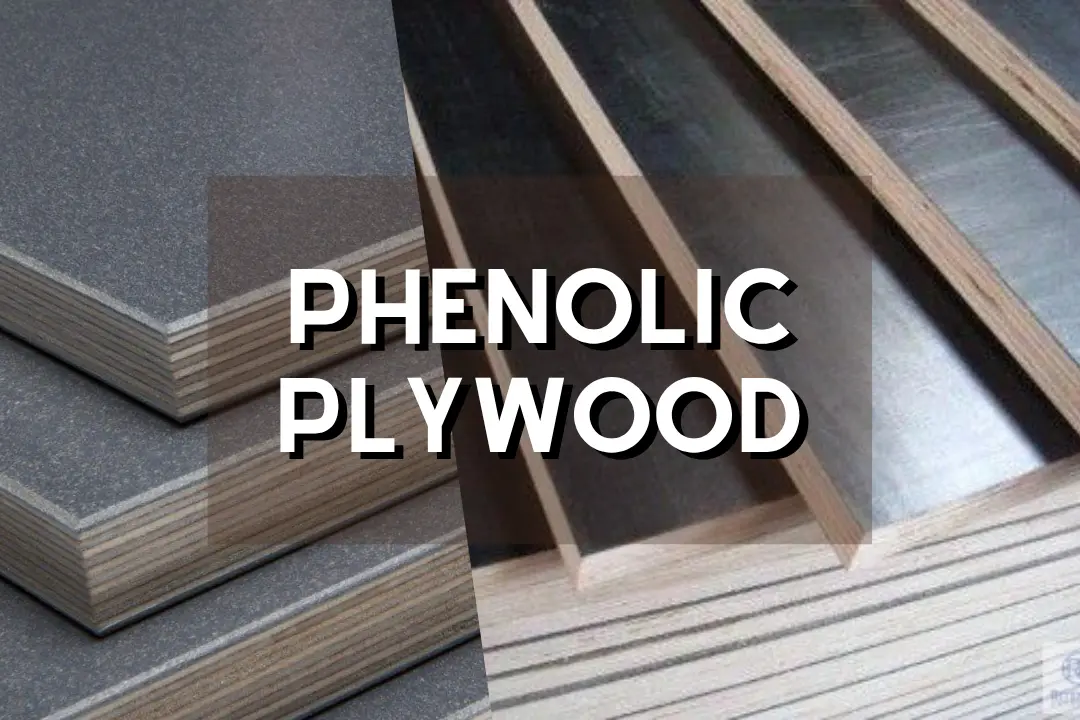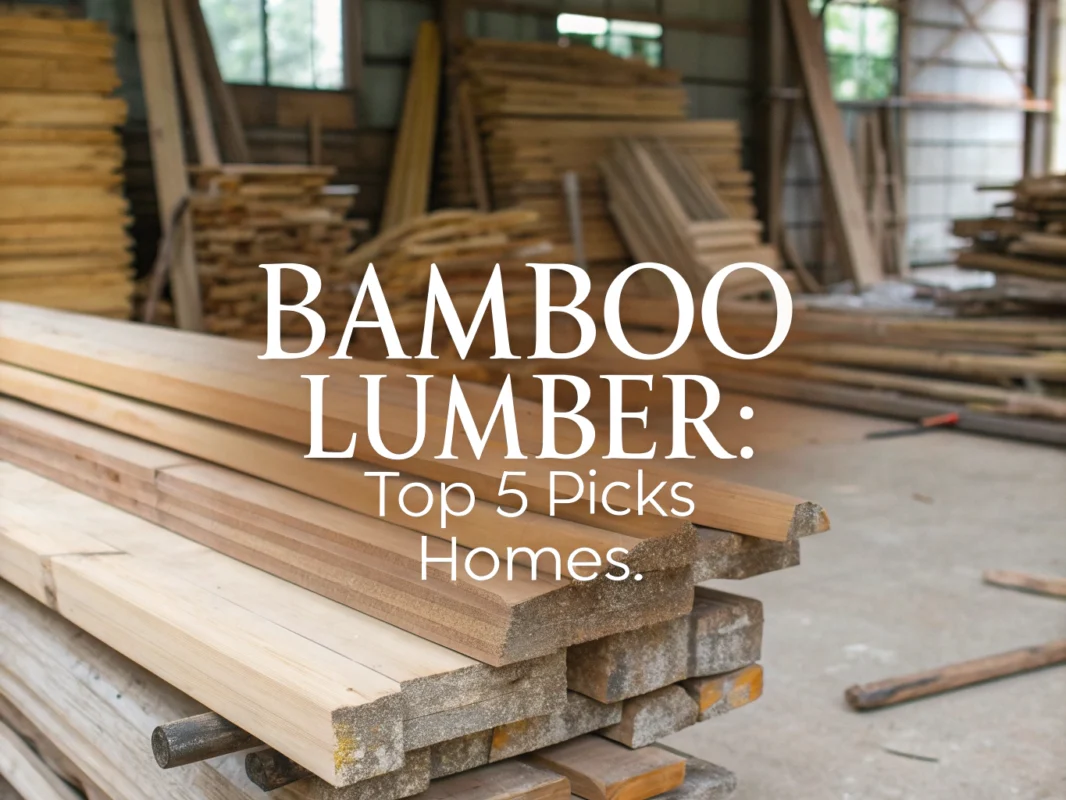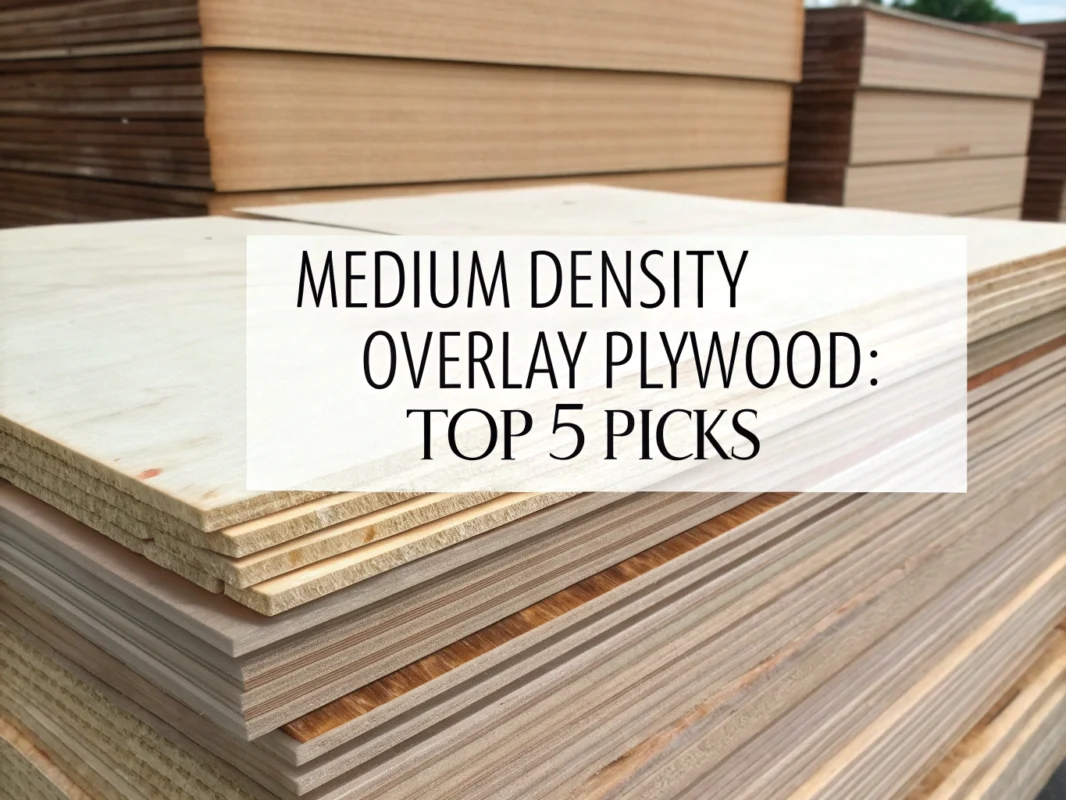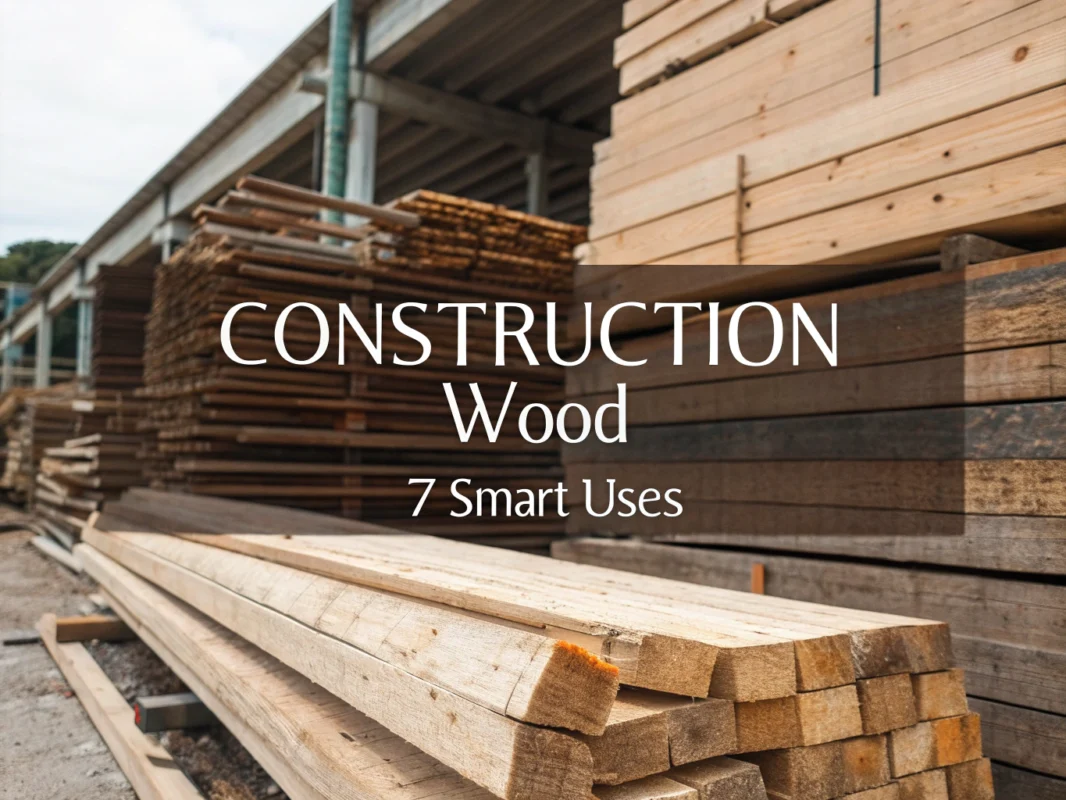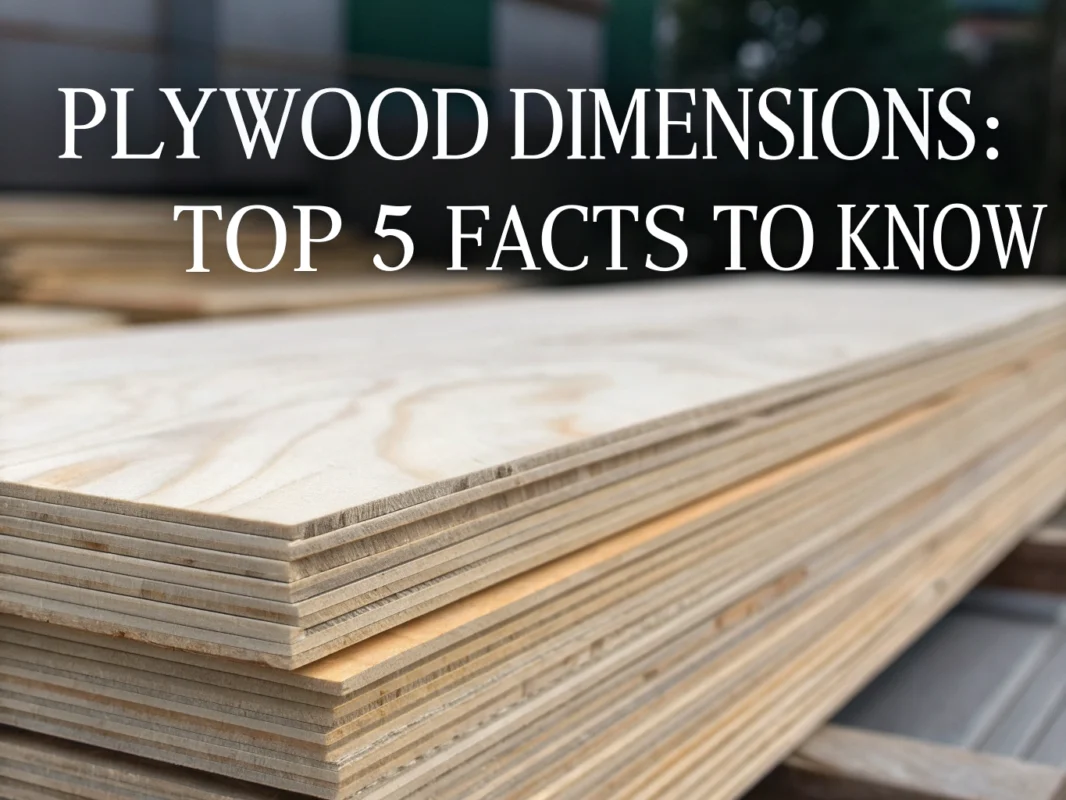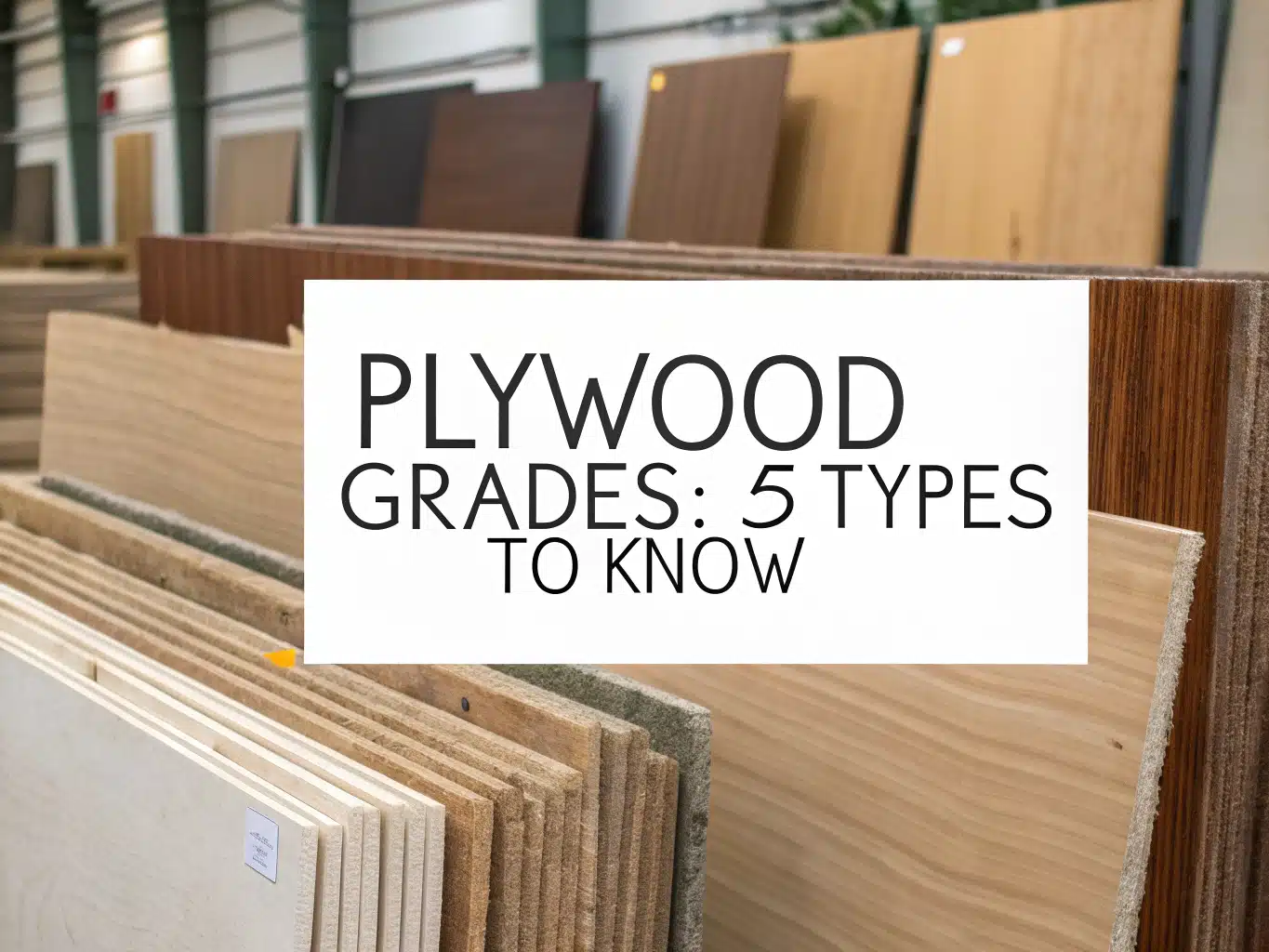
Plywood Grades: 5 Types to Know

Have you ever wondered why the cost of plywood varies so much? It often comes down to its grade. Plywood grades range from smooth and flawless to rough and budget-friendly. These grades affect both appearance and strength. They also help you find the right type for your needs. Let’s explore what these grades mean and how they make a difference in projects big and small.
Table of Contents
Plywood grades represent a standardized letter-based system (A, B, C, D) that identifies the quality and finish of veneer faces on plywood sheets. These grade combinations directly determine visual quality, structural strength, cost, and application suitability for construction, cabinetry, furniture, and craft projects.
What Are Plywood Grades?
Plywood grading describes both the face and back veneers using letter combinations like A-B or B-C. Each letter represents the quality level of one side of the plywood sheet. The first letter indicates the face veneer quality, while the second shows the back veneer grade.
This grading system helps builders and woodworkers select the right material for their specific needs. Higher grades cost more but offer superior appearance for visible surfaces. Lower grades provide structural strength at budget-friendly prices for hidden applications.
According to The Green Fortune, grade quality directly impacts finished product value and cost, with prices differing by up to 50% or more between premium and basic grades.
A-Grade Plywood: Premium Quality
A-grade plywood represents the highest quality option with a flawless, smooth, and sanded finish. This premium grade features minimal knots, little to no visible defects, and accepts paint or stain beautifully.
The smooth surface makes A-grade perfect for visible applications like furniture, cabinetry, exposed shelving, and decorative paneling. Custom kitchen cabinets and high-end furniture projects benefit from this grade’s superior appearance.
Expect to pay the highest price for A-grade plywood due to its premium quality. The investment pays off when appearance matters most, such as in cabinet grade plywood applications.
B-Grade Plywood: Quality with Minor Defects
B-grade plywood offers a clean, mostly smooth surface with minor visible defects like small knots, patches, or repairs. This grade strikes a balance between quality and affordability.
Common applications include interior cabinetry, utility furniture, shelving, and paneling where minor blemishes won’t affect functionality. Cabinet interiors and moderate-quality woodworking projects work well with B-grade.
B-grade costs significantly less than A-grade while maintaining decent appearance for most projects. This makes it popular for projects with one visible side, like built-in shelving or cabinet backs.
C-Grade Plywood: Structural Focus
C-grade plywood features a rougher, unsanded surface with more visible knots up to 1.5 inches in diameter. Splits, repairs, and patches are present but don’t compromise structural integrity.
This grade excels in structural applications where appearance doesn’t matter. Subflooring, roofing, wall sheathing, and roof decking commonly use C-grade plywood for its strength and affordability.
Sherwood Lumber notes that C-grade provides excellent structural performance at budget-friendly prices. Builders choose this grade when strength over appearance matters most.
D-Grade Plywood: Lowest Quality
D-grade plywood represents the lowest quality option with many knots, defects, and holes up to 2.5 inches in diameter. Limited repairs and a generally rough surface characterize this grade.
Applications include hidden structural roles like subflooring, temporary bracing, packing crates, and areas that other materials will cover. Never use D-grade for exposed surfaces or finishing work.
The least expensive option makes D-grade attractive for budget-conscious projects where plywood won’t be visible. Construction projects often use this grade for temporary applications or structural backing.
Common Plywood Grade Combinations and Exposure Ratings
Grade Combinations
Plywood manufacturers designate sheets with two-letter combinations representing face and back veneer quality. Here are the most common combinations:
- A-A: Highest quality on both sides for decorative panels and premium furniture
- A-B: One flawless face with moderate-quality back for projects with one visible side
- B-C: Cost-effective option featuring clean front and utility-grade back
- C-D (CDX): Most common for sheathing, roofing, and underlayment applications
Exposure Ratings
Plywood also receives exposure ratings that affect durability and application suitability. These ratings work independently of grade letters:
- Exterior: Fully waterproof construction suitable for outdoor use and roofing
- Exposure 1: Handles temporary outdoor exposure during construction phases
- Exposure 2: Interior use only with limited moisture resistance capabilities
According to Forest Plywood, CDX plywood with exterior adhesive is the most commonly used grade for roof and wall sheathing in home construction. Choose appropriate exposure ratings to match environmental conditions for your specific project needs.
For marine applications, consider specialized options like marine plywood that exceeds standard exterior ratings. Some projects may benefit from luan plywood for lightweight applications.
Best Plywood Products for Crafts and DIY Projects
These premium plywood options work perfectly for crafting, woodworking, and DIY projects requiring quality materials:

Durable Baltic Birch Craft Wood
- Ideal size for versatile projects
- Stronger than typical basswood
- Perfect for laser and CNC cutting
- High-quality B/BB grade
- Excellent for crafting wood shelves

3mm Baltic Birch Sheets for DIY
- Crafted for precision projects
- Smooth veneer for fine finishes
- Great for laser cutting and engraving
- Suitable for woodburning and painting
- Six pieces for ample supply

Craftiff 12x12 Plywood Board Pack
- Premium A-grade quality wood
- Perfect for various craft projects
- Easy to cut and shape
- Unfinished, ready for customization
- Pack includes five sheets

Craftiff 22x12 Craft Plywood Set
- Thin and flexible for intricate designs
- High-quality A-grade wood for superior projects
- Ample pack of ten sheets
- Ideal for crafting and model building
- Easy to handle size

Thin Baltic Birch Sheets for Creativity
- Flat sheets for easy stacking
- Ideal for DIY arts and crafts
- Perfect for laser cutting
- High-quality B/BB veneer finish
- Suitable for both painting and drawing
How to Choose the Right Plywood Grade for Your Project
Selecting the correct plywood grade requires matching intended use with required surface finish and environmental exposure. Consider whether the plywood will be visible, painted, or hidden from view.
Use a plywood grade chart to match applications effectively. A-grade works best for fine woodworking and visible surfaces, while C-D grades suit structural applications where appearance doesn’t matter.
Always verify grade stamps on plywood sheets before purchasing to confirm suitability for your project. Capital Forest recommends checking stamps to avoid costly mistakes in material selection.
Balance cost versus benefit by choosing high grades for visual quality and lower grades for budget projects or unseen areas. This approach maximizes value while meeting project requirements effectively.
FAQs
What Are The Different Grades Of Plywood And What Do They Mean?
Plywood is graded based on the quality of its veneer sheets, ranging from A to D. ‘A’ grade has the smoothest, defect-free surface, while ‘D’ may have visible knots and imperfections. Combined grades, like AC, represent different qualities on each side, impacting both appearance and use.
How Can I Tell The Difference Between AC And BC Plywood?
The difference lies in the quality of the surface veneer layers. AC plywood has an ‘A’ grade surface on one side, which is smoother and less prone to defects, while BC has a ‘B’ grade surface, which allows for more patches and knots, making it slightly rougher and less visually appealing.
What Is The Best Grade Of Plywood For Furniture Making?
The best grade for furniture making is typically ‘A’ or ‘AB’, offering a smooth, clean finish that is ideal for visible surfaces. It ensures a high-quality appearance and reduces the amount of finishing work required.
How Does Marine Plywood Differ From Other Plywood Grades?
Marine plywood is designed for areas with high moisture exposure. It uses waterproof glue and high-quality hardwood veneers, which makes it more resistant to warping and decay, unlike other plywood grades that may not endure wet conditions as well.
Can You Use CDX Plywood For Outdoor Projects?
CDX plywood is often used for construction projects due to its durability and cost-effectiveness, primarily as underlayment. However, while it can be used outdoors, it’s not entirely waterproof and may not hold up well under prolonged exposure to moisture unless properly sealed.








